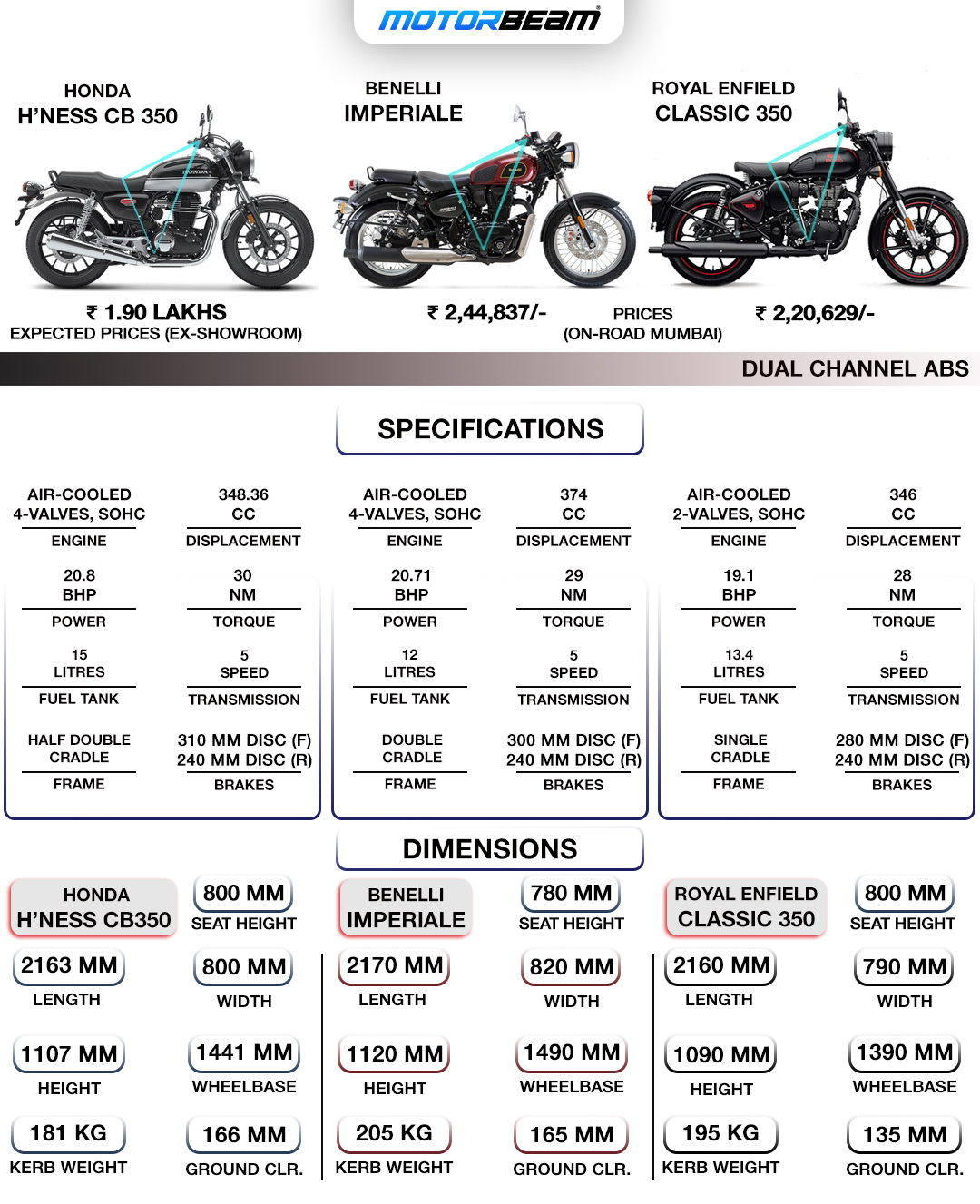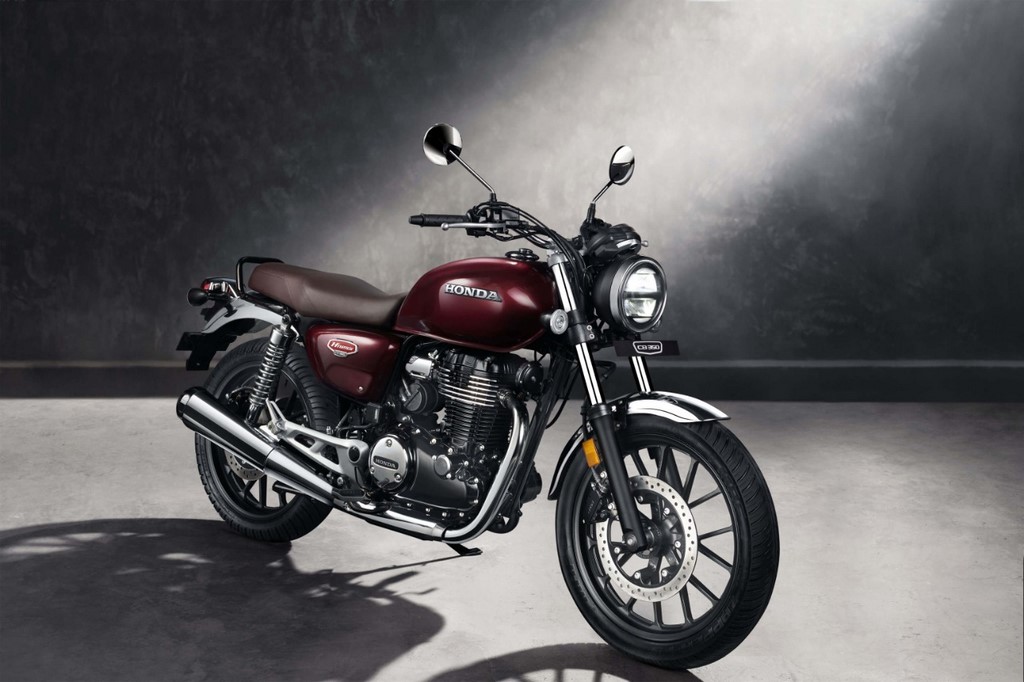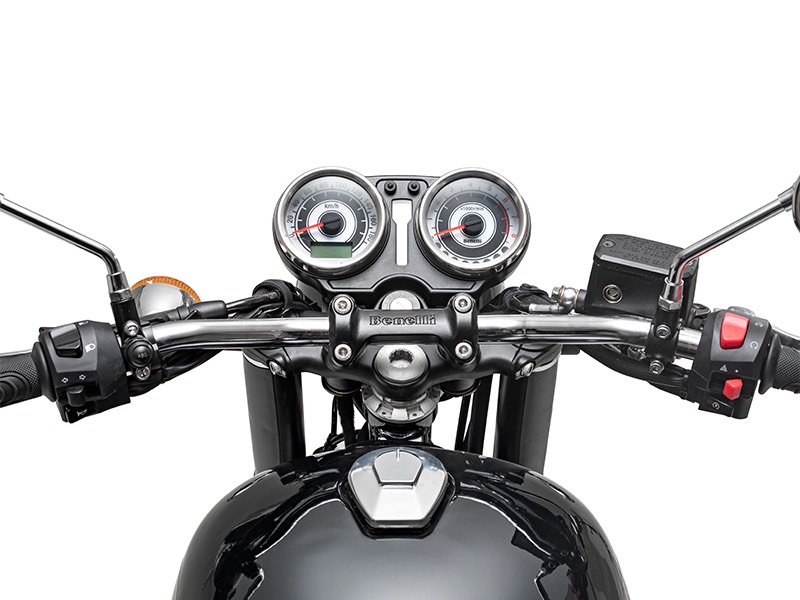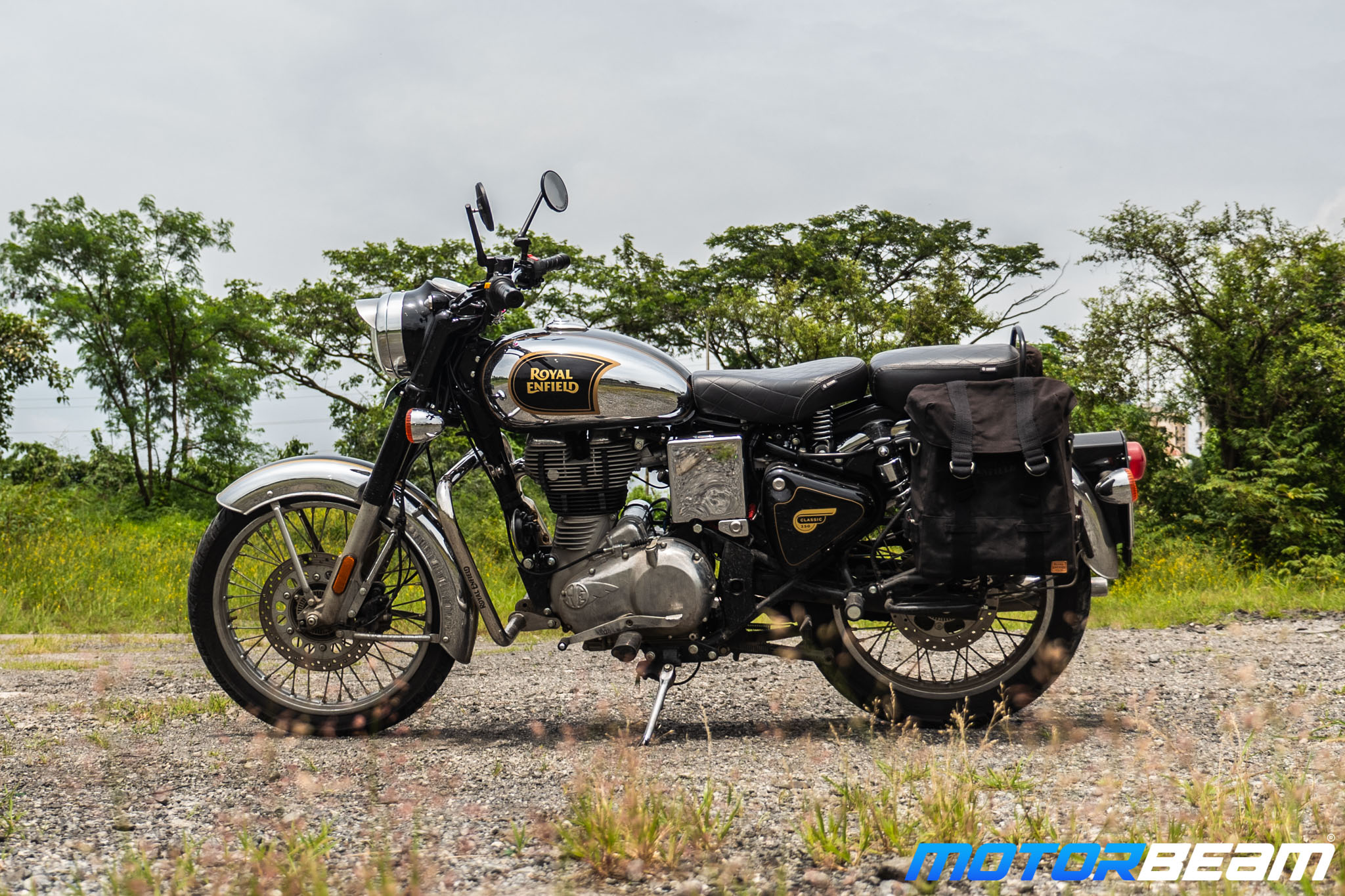Honda H’Ness CB 350 vs Benelli Imperiale vs RE Classic 350 – Spec Comparison
Eager to know how the H'Ness fares against the competition? We help you find out!
Eager to know how the H'Ness fares against the competition? We help you find out!
Home » Bike News » Honda H'ness CB 350 » Honda H’Ness CB 350 vs Benelli Imperiale vs RE Classic 350 – Spec Comparison

After much criticism, Honda has finally taken a step in the right direction as they introduced the H’Ness which is specifically made with the Indian audience in mind. By the looks of it, Honda has thought out almost every aspect and as a result the H’Ness has a lot to offer, including some premium first-in-segment features. However, the segment already sees two fine offerings and we aim to find out how Honda’s new cruiser fares against them. Hold tight, as we pitch the Honda H’Ness CB 350 vs the Benelli Imperiale vs the RE Classic 350 in a spec comparison!
Now, the Honda H’Ness is the newest in this group and it shows here. The CB 350’s styling is one of the finest, and it shows that Honda really put in effort in order to make their product stand out. Starting from the front, the H’Ness gets full LED lighting and unique ring-type indicators while the other two get a halogen setup. As you move along, you see that there is a lot of chrome on the H’Ness which looks appealing to the eyes. RE also offers a chrome edition which is also good-looking while the Benelli has no such option.
Further, the Imperiale gets spoke wheels and even the RE gets a spoke wheel variant, but Honda has skipped out on this. While this might upset some ‘old-school’ bike fans, the alloys are much better for our poor road conditions as they let you fix punctures with ease. One other difference between the H’Ness and the other two is the seat. The H’Ness gets a single seat while the other two get split seats and the RE even gets a single-seat option for added retro-appeal. Further, Honda and RE both have plenty of colour options including matte finishes for the Classic and a dual-tone scheme for the H’Ness while the Imperiale comes in only three options. In conclusion, looks are subjective, but if we were to pick, we’d choose the best blend of modern and classic in the lot, the H’Ness CB 350.
As we all know, the feature list is where the RE Classic 350 suffers the most. It gets just an analogue speedometer (without a fuel gauge), halogen lights, dual-channel ABS, and alloys in some variants. With the RE out of the way, the real fight is between the Imperiale and the H’Ness. Both feature a semi-digital instrument cluster with a hazard switch and a dual-channel ABS. The Imperiale’s speedo looks tidier than the H’Ness, though, thanks to the dual-pod nature.
However, the H’Ness has a much longer feature list as it gets first-in-class full LED lighting, Honda’s Selectable Torque Control, smartphone connectivity with voice commands, and even the semi-digital speedometer shows much more information. As a bonus, the H’Ness offers alloys as standard and you can also opt for a dual-tone paint scheme. It’s safe to say that the H’Ness should be your pick if modern features come in your priority list, with the Benelli in second and the RE in third place.
Now as we haven’t ridden the H’Ness yet, we’ll be talking about things we expect it to do well by sticking solely to the spec sheet. To begin, the riding triangle of the Imperiale and the new CB 350 is quite similar as shown in the spec sheet. Both offer comfortable upright riding postures. However, the RE offers a more upright posture which will be more suitable for long hours on the saddle, thanks to the tall handlebar setup. The other difference comes in the seat setup. The long single piece of the H’Ness might be more comfortable and more accommodating than the split seats on the Imperiale and the Classic 350.
The main issue with the Classic, though, is its low ground clearance at just 135 mm. Both the Imperiale and the H’Ness offer 165 mm and 166 mm ground clearance, respectively, making them more suitable for bad stretches. Coming to seat height, the Imperiale has the lowest one at 780 mm, making it more suitable for shorter riders. In summary, all three motorcycles have various strong points, but if a comfort and touring capabilities are your top priorities, the RE should be your pick.
All motorcycles are very closely matched in this department, but there are some fine but key differences. First, the RE Classic 350 hosts a 346cc engine which makes 19.1 BHP power and 28 Nm of torque. Second, the Benelli Imperiale gets a 374cc motor which makes 20.71 BHP power and 29 Nm of torque. Lastly, we have the Honda H’Ness which gets a 348.36cc mill which churns out 20.8 BHP of power and 30 Nm of torque. All three come with air-cooling, fuel injection and get a 5-speed gearbox. But there’s a lot more going on here. Coming to the differences, the Imperiale and the H’Ness both get a 4-valve setup while the RE gets a 2-valve one. Further, the H’Ness edges the competition as it gets first-in-segment traction control and slipper clutch.
The former might not make much sense for a bike of this calibre, but it definitely won’t harm to have electronics back you up in tricky situations. Moreover, while we think Honda could’ve extracted more juice from the motor, the torque comes in at just 3000 RPM, which will make life easier in the city. The H’Ness also has the biggest fuel tank capacity at 15-litres, which further improves the package. All in all, we think the H’Ness will better the superb refinement of the Imperiale, but we must wait till we ride actually ride it.
We’ll be talking numbers here as we haven’t ridden the CB 350 yet, but the story is still interesting. The biggest thing in the favour of the H’Ness is its low weight. At 181 kg, the H’Ness undercuts the RE and the Benelli by 14 kg and 24 kg, respectively. This will definitely make the H’Ness feel punchier to ride and better to maneuver. However, the RE offers the shortest wheelbase which corresponds to super flick-ability with the H’Ness in a close second and the Imperiale in an unimpressive third.
Coming to the brakes, all bikes offer front and rear disc brakes for the price. There is a difference in size, though. The H’Ness has the biggest front brake at 310 mm, with the Imperiale and the Classic offering a 300 mm and a 280 mm one, respectively. Lastly, the half cradle frame of the H’Ness will improve the riding dynamics even more. All in all, the H’Ness seems to be the clear winner here as it gets better brakes, significant weight deficit and a better chassis which makes it a well-rounded package between the three.
If Honda prices the H’Ness CB 350 at around Rs. 1.90 lakhs (ex-showroom), it will definitely be one of the best options in the segment. However, the protagonist of this segment is the Classic 350, which sells like beer on a Friday night. Surely, it will be hard to change the minds of RE fanboys, but we think Honda finally has a good chance of coming back into the game with the H’Ness. After all, it offers the longest feature-list, biggest fuel tank, good performance and with Honda’s refinement and reliability thrown into the mix, it’s really hard to fault the H’Ness. Oh, and Honda also claims that the H’Ness offers one of the best exhaust notes in the segment in its stock self as well.



